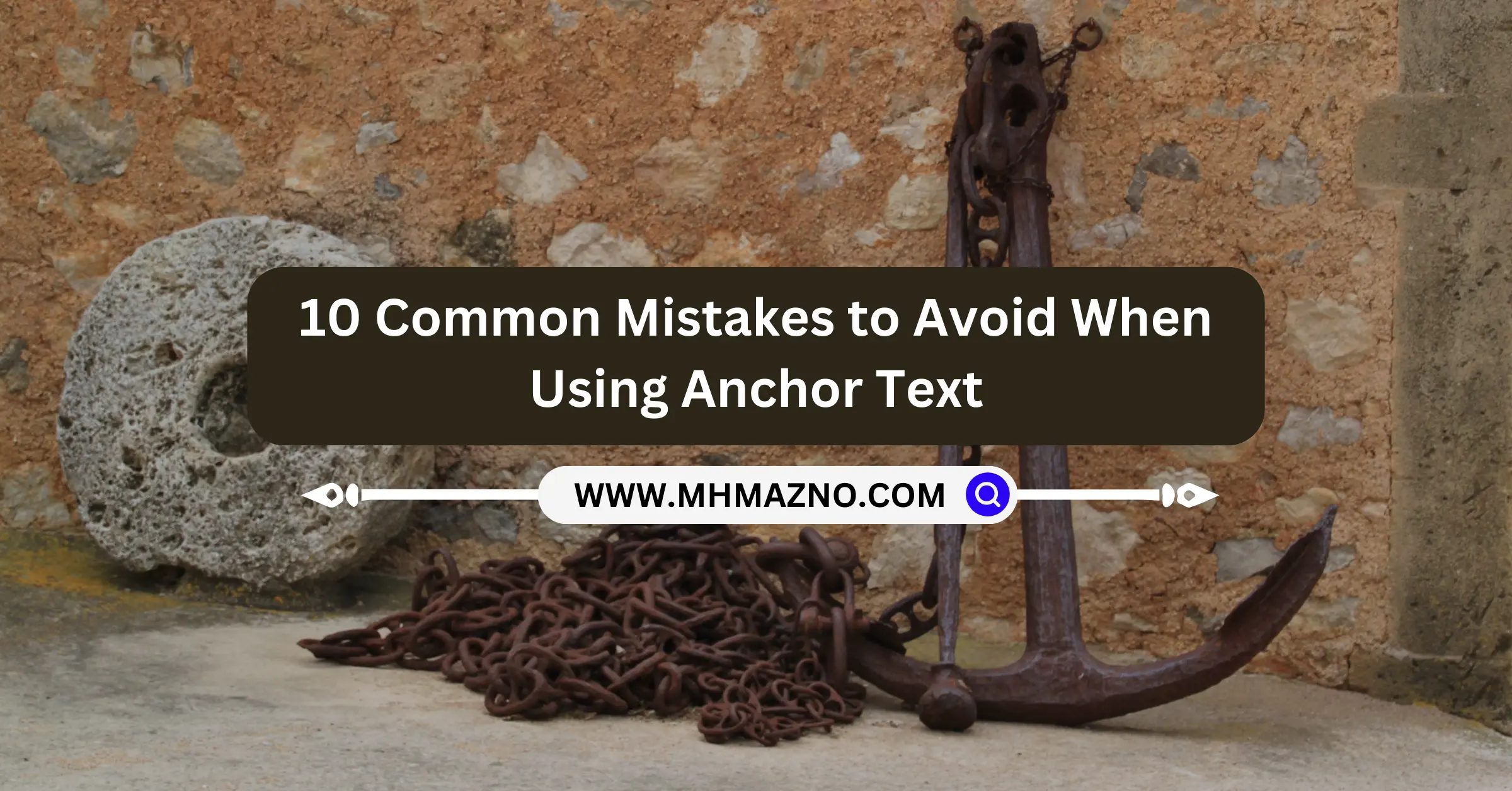In the realm of SEO and content optimization, anchor text plays a pivotal role in guiding both search engines and users to relevant content. When used correctly, it can significantly enhance the visibility and ranking of your website. However, improper use of anchor text can lead to detrimental effects on your site’s SEO performance. Here, we delve into the 10 common mistakes to avoid when utilizing anchor text.
1. Over-Optimization:
Over-optimizing anchor text by excessively using exact-match keywords can raise red flags for search engines. Instead, focus on using natural and diverse anchor text variations to maintain a healthy link profile.
2. Using Generic Phrases:
Opting for generic anchor text like “click here” or “read more” provides little context to search engines about the linked content. Instead, use descriptive anchor text that accurately reflects the content it’s linking to.
3. Ignoring Relevance:
Linking irrelevant anchor text to your content can confuse both users and search engines, leading to a negative impact on your site’s credibility. Ensure that your anchor text aligns closely with the content it’s pointing to.
4. Neglecting Internal Linking:
Failing to incorporate internal linking with relevant anchor text limits the flow of link equity throughout your website. Strategically interlink your content with contextual anchor text to enhance navigation and SEO performance.
5. Neglecting Accessibility:
Using anchor text that is difficult to distinguish from regular text can hinder user experience, especially for individuals with visual impairments. Opt for visually distinct anchor text that is easily identifiable as a clickable link.
6. Skipping Anchor Text Variation:
Repetitive use of the same anchor text across multiple links can appear unnatural and spammy to search engines. Vary your anchor text to include synonyms, related keywords, and branded terms for a more organic link profile.
7. Misusing No-Follow Attributes:
Indiscriminately applying the “nofollow” attribute to all external links can hinder your site’s ability to pass link equity to valuable sources. Reserve the use of nofollow for untrusted or irrelevant links while allowing natural, authoritative links to pass equity.
8. Failing to Update Anchor Text:
As content evolves over time, failing to update outdated anchor text can lead to broken links or misdirected traffic. Regularly audit and update anchor text to ensure accuracy and relevance.
9. Neglecting Mobile Optimization:
Ignoring mobile users by using anchor text that’s too small or closely packed for touchscreen devices can result in poor user experience. Optimize anchor text for mobile by ensuring adequate font size and spacing for easy tapping.
10. Disregarding User Intent:
Prioritizing keywords over user intent when crafting anchor text can lead to high bounce rates and low engagement. Understand the searcher’s intent behind the keyword and tailor your anchor text to provide valuable context and relevance.
FAQs:
Can I use the same anchor text for all my links?
It’s not advisable. Using the same anchor text excessively can be seen as over-optimization by search engines. Aim for variety and relevance in your anchor text strategy.
Should I always include keywords in my anchor text?
While keywords can be beneficial, it’s essential to prioritize relevance and context. Use keywords when appropriate, but don’t force them into every anchor text.
What is the ideal length for anchor text?
There’s no strict rule, but concise and descriptive anchor text typically performs best. Aim for clarity and relevance rather than focusing solely on length.
Is it necessary to use anchor text for every link?
While anchor text can enhance SEO and user experience, it’s not mandatory for every link. Use anchor text where it adds value and context to the linked content.
How can I monitor the effectiveness of my anchor text strategy?
Utilize tools like Google Analytics and Search Console to track metrics such as click-through rates, bounce rates, and keyword rankings associated with your anchor text. Adjust your strategy based on performance data.
Conclusion:
By avoiding these common mistakes and following best practices, you can leverage anchor text effectively to enhance your website’s SEO performance and provide a seamless user experience. Remember to prioritize relevance, diversity, and user intent to maximize the impact of your anchor text strategy.
Related Articles
